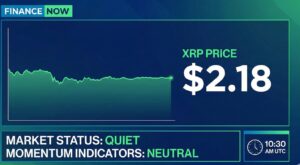Although blockchain technology is popular for its use in Bitcoin and cryptocurrency trading, its importance transcends beyond the crypto space. The disruptive technology has engulfed several industries and is changing the face of how these industries work.
Before the evolution of technological solutions, many industries relied on analog processes. For example, the banking sector is inclusive. However, the 21st century offered a new and easier way of getting things done. Blockchain technology is one of its profound solutions.
Blockchain technology uses a decentralized system to store transactions. More so, the mere existence of blockchain provides several ways to change the face of traditional banking systems. Its transparency, security, and immutability make up the core ways in which blockchain can change the banking industry.
4 Ways Blockchain May Change the Face of Banking
Transparency:
Blockchain technology is known for its transparent system, which reduces the need for checks and balances. The traditional banking system was originally in charge of payments, loans, securities, and other financial services. With blockchain technology on the scene, these processes have become transparent. Hence, giving no room for one person to hijack or rig the financial system. Blockchain does not allow for bias through its transparent feature. This allows finances to flow on the right path.
Security:
One thing that the financial sector is susceptible to is fraud. Consumers of financial services are prone to be victims of scammers who have access to financial records and databases that should be protected from prying eyes. What blockchain does is provide a ledger that helps secure banking records, history, and transactions on its block. Banks also have the avenue to store large amounts of data in a more streamlined and accessible form. Because the blockchain network is decentralized, any data that has been entered into its network cannot be altered or stolen. This makes it difficult for any hacker to use banking information to steal from people.
Immutability:
When something is immutable, it implies that it can remain unchanged. The immutable feature of blockchain makes it impossible for anyone, including government or corporations, to change, alter or falsify data. For the banking sector, this measure enhances productivity in terms of its audit system. It saves time and improves efficiency. This is achieved by providing the opportunity to maintain a full historical record that cannot be tampered with. This, in turn, yields a level of trust between bank stakeholders and consumers.
Decentralization:
With blockchain, gone are the days when customers need to see any bank personnel to attend to any financial hitches. Blockchain technology provides a peer-to-peer method that removes the influence of intermediaries. A smartphone and internet connection allows anyone to transact with someone from anywhere on the globe. Distance is no longer a barrier. Similarly, the costs of transacting across borders have been made easier. Many financial providers impose high fees and take long periods to process cross-continental transactions. Blockchain technology eliminates these problems by improving customer satisfaction.
The growing recognition of blockchain in financial services has the potential to revolutionize the banking industry. It is up to financial service providers to find ways to integrate the technology into services so that traditional banking does not become obsolete.




























